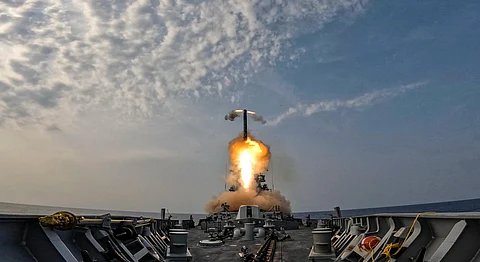

India’s Air Chief Marshal A.P. Singh has claimed that six Pakistani aircraft were destroyed during Operation Sindoor between May 7 and 10. According to Singh, these included five fighter jets and one large airborne early warning and control system (AEW&C) aircraft. He presented these figures as retaliation for the April 22 Pahalgam massacre, which killed 26 civilians.
Pakistan has strongly rejected these claims. Its military states that no aircraft were lost during the fighting. Instead, Islamabad says its forces inflicted damage on the Indian Air Force. This claim, like India’s, has not been independently verified.
While India has promoted the success of its Russian-made S-400 missile system, citing a “record” surface-to-air kill at 300 km, UK intelligence assessments cast serious doubt on the scale of Pakistani losses. British analysis indicates that only one Pakistani C-130 transport aircraft sustained damage, far from the six aircraft claimed by New Delhi.
Reuters and other major outlets have noted the absence of conclusive evidence supporting India’s figures. No neutral satellite imagery has confirmed the destruction of multiple Pakistani aircraft.
Pakistan has officially acknowledged the deaths of 11 military personnel and injuries to 78 others during the conflict. The Inter-Services Public Relations (ISPR) released the names of the fallen soldiers, providing a level of transparency absent from the aerial loss claims.
Islamabad maintains that its air defenses and operational tactics prevented significant damage to its air fleet. Analysts point to Pakistan’s use of dispersed basing and integrated radar systems as key factors in limiting the impact of India’s strikes.
Independent observers note that India’s Operation Sindoor announcement follows a familiar pattern in Indo-Pakistani tensions. Past Indian military claims have often faced challenges after the fact. Examples include the 2016 Uri “surgical strikes” and the 2019 Balakot airstrikes, both of which lacked independent verification and were met with skepticism from foreign analysts.
This track record reinforces the need for caution when assessing New Delhi’s reported battlefield successes, especially when they remain uncorroborated by impartial evidence.
Operation Sindoor ended with a ceasefire on May 10. Both India and Pakistan claim operational success. For Islamabad, the lack of verified aircraft losses is presented as proof that Pakistan can withstand strikes from advanced systems such as the S-400. For New Delhi, the operation is framed as a demonstration of military precision and political resolve.
The truth, as is often the case in South Asia’s conflict narratives, remains caught between two competing versions of events.